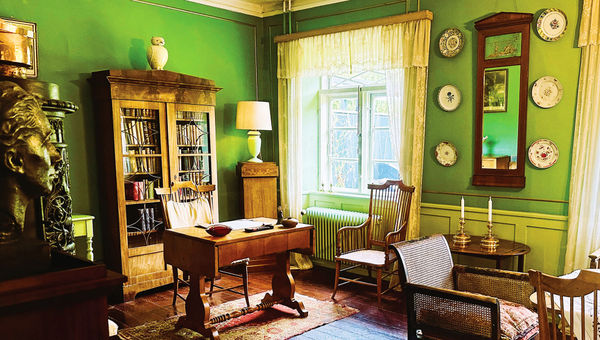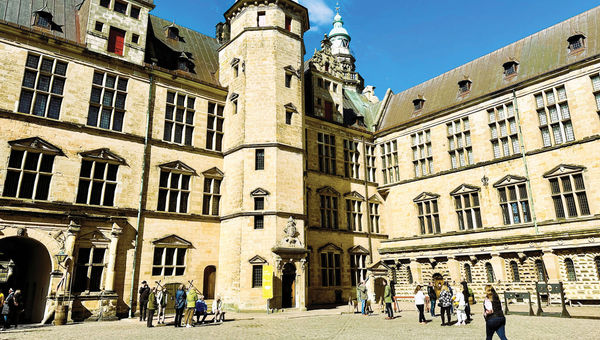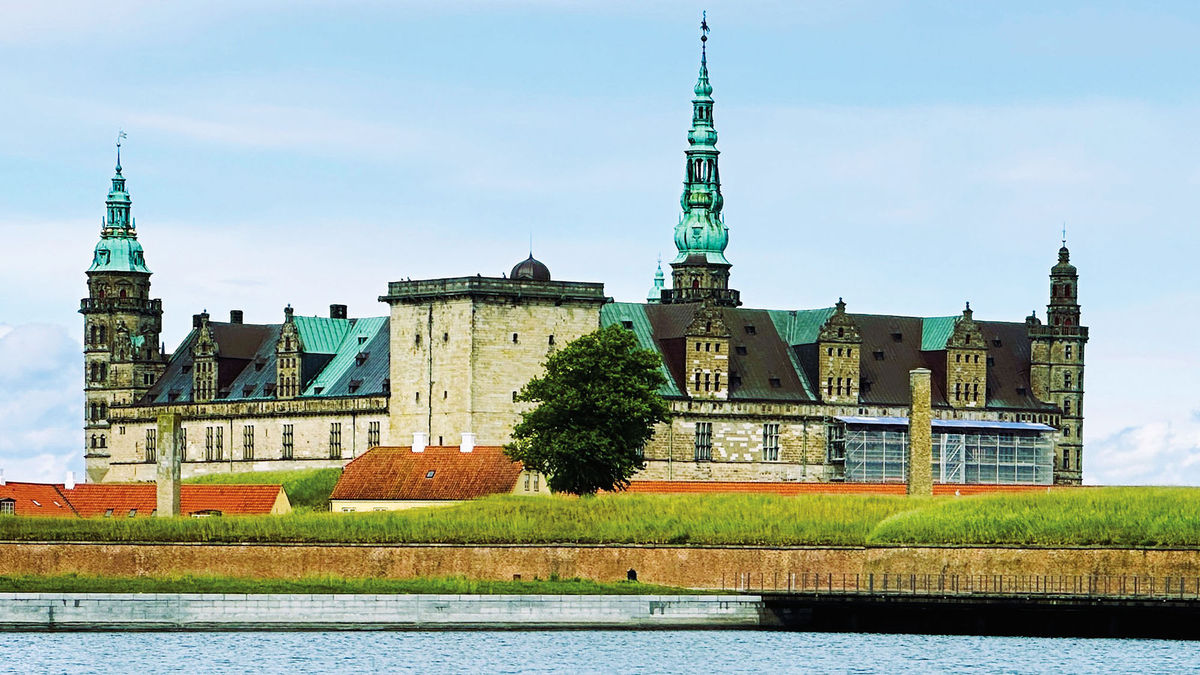Copenhagen’s sleek Nordic architecture, sweeping seascapes and royal palaces initially topped my list of sights in Denmark’s capital. But after learning about the city’s distinguished literary tradition, my focus shifted to places connected to fairy tales, women writers and Shakespeare.
As an avid reader and book club member, I’m drawn to destinations tied to authors I admire. I was pleasantly surprised to discover several literary attractions in Copenhagen and its nearby towns as well as numerous bookstores and libraries.
The city’s most iconic literary landmark is the century-old bronze statue of The Little Mermaid, inspired by Hans Christian Andersen’s 1837 fairy tale. Perched on a rock in the harbor, she attracts millions of visitors by bus and boat.
Statues of Andersen himself can be found throughout the city, commemorating the prolific Danish writer whose beloved children’s stories have inspired numerous adaptations, including several Disney movies. His diary is on permanent display at the Black Diamond, the stunning modern addition to the Royal Danish Library that is a must-see for its light-catching design alone.
While Anderson may be Denmark’s most renowned storyteller, he’s not the only one with an enduring legacy.
On a daytrip north of Copenhagen, I explored two literary-related sites: the Runsted estate of Karen Blixen, whose memoir “Out of Africa” became an Oscar-winning film in 1985, and Kronborg Castle in Helsingor, Shakespeare’s Elsinore from “Hamlet.”
Both destinations can be reached in less than an hour via the Coast Train between Copenhagen Central Station and Helsingor, the northernmost stop. The train skirts the Oresund Strait, separating Denmark’s Zealand Island from Sweden. Known as the Danish Riviera, the coast is popular among cyclists for its scenic bike paths that wind through dense woods and along sandy beaches.
Rainy May weather ruled out biking, so we opted for the train to Rungsted. From there, we raised umbrellas and trod a well-marked trail beneath a canopy of beech and oak trees at Rungstedlund, Blixen’s 40-acre estate. In addition to the museum and a cafe, the property includes a bird sanctuary, orchards and flower gardens, making the 1-mile walk a delightful journey through nature.

Karen Blixen did a good deal of her writing in this room at Rungstedlund, the author’s estate. Photo Credit: Barbara Redding
Karen Blixen’s world
Born Karen Dinesen in 1885, Blixen grew up at Rungstedlund. After spending 17 years in Kenya managing a coffee farm, she returned to Denmark and reinvented herself as the writer Isak Dinesen. “Out of Africa,” her story collection “Seven Gothic Tales” and her story “Babette’s Feast” secured her reputation as one of Denmark’s literary giants, and she was considered for the Nobel Prize in Literature several times.
The family’s white, two-story house was converted into a museum in 1991. Carefully preserved as it looked when Blixen lived there, the museum features exhibits tracing her life: sketchbooks from her youth, portraits she painted and photos of her ill-fated marriage to Swedish nobleman Bror von Blixen-Finecke.
Displays of Masai spears, carved masks, drums and hunting rifles evoke her life in Kenya in the final days of British colonial rule. The death of her great love, British adventurer Denys Finch Hatton, in a plane crash coincided with the farm’s collapse. Blixen returned to Denmark in 1931 heartbroken, financially ruined and in poor health.
Yet her writing career thrived. Her first book was published when she was 48. At her desk overlooking the gardens she adored, she spun lyrical stories of her unconventional life in Africa. Fresh flowers still decorate tabletops, honoring her passion for nature.
Blixen died in 1962, reportedly sustaining herself on oysters, Champagne and painkillers. We paid our respects at her grave beneath a 300-year-old beech tree before continuing north on the train.

The inside courtyard of Kronborg Castle. Photo Credit: Barbara Redding
Shakespeare’s Elsinore
From Helsingor’s ornate brick railway station, we walked along the harbor as ferries crossed the strait, known as the gateway to the Baltic Sea. Ahead rose the golden spires and green copper roofs of Kronborg Castle, one of Northern Europe’s grandest Renaissance fortresses.
Constructed in the 15th century at the strait’s narrowest point, the castle collected tolls from passing ships that spurred Denmark’s power and wealth. Today, Kronborg is a Unesco World Heritage Site, enticing history lovers and Shakespeare fans alike.
Kronborg’s deep moat, sandstone walls and sea-battered ramparts appear untouched by time. Tales of its vast ballrooms and opulent royal chambers likely reached London, inspiring Shakespeare to set “Hamlet” there. In its echoing halls, I could almost imagine the Danish prince avenging his father’s murder and meeting his tragic fate. His ghost is said to still haunt the corridors.
Actors stage “Hamlet” in the courtyard each summer. Guided tours explore myths, such as the legend of Holger the Dane, a stone warrior hidden deep within the castle that is expected to awaken if Denmark is ever threatened. Whether Shakespeare himself ever visited remains a mystery.
On our walk back, we lingered in Helsingor’s cobbled streets, lined with medieval buildings, before returning to Copenhagen.
From Andersen’s fairy tales to Blixen’s African memories and Shakespeare’s enduring tragedy, Copenhagen and its coastal neighbors brim with stories that shaped world literature. For travelers with a passion for books, Denmark’s literary landmarks make a memorable addition to any itinerary.
The Copenhagen Card includes transportation and admission to Kronborg and the Blixen museum.
